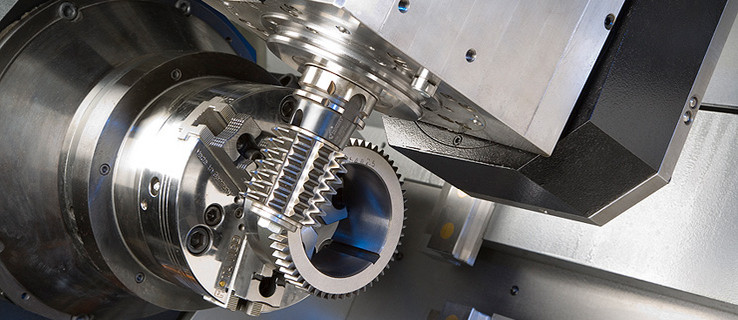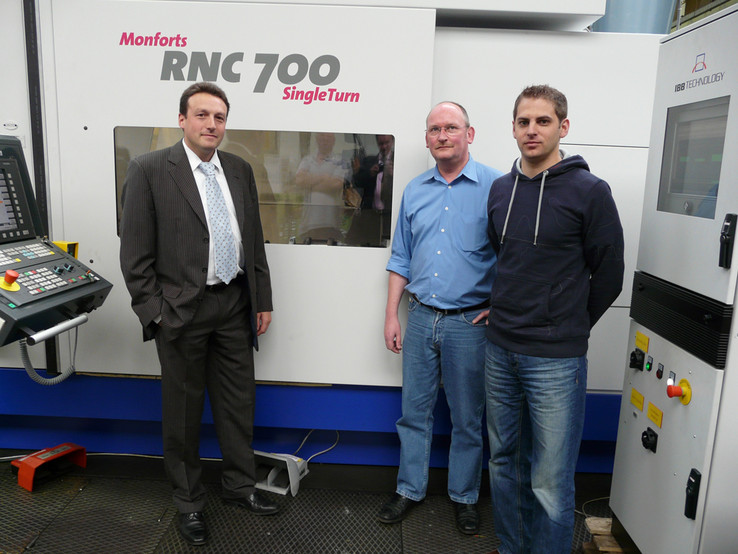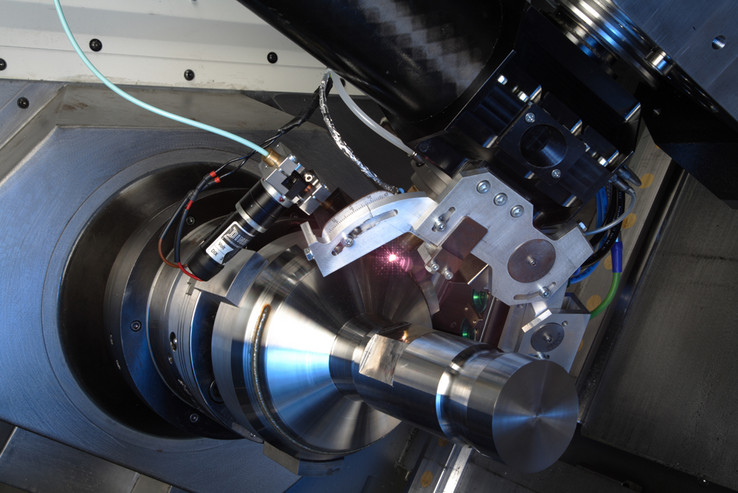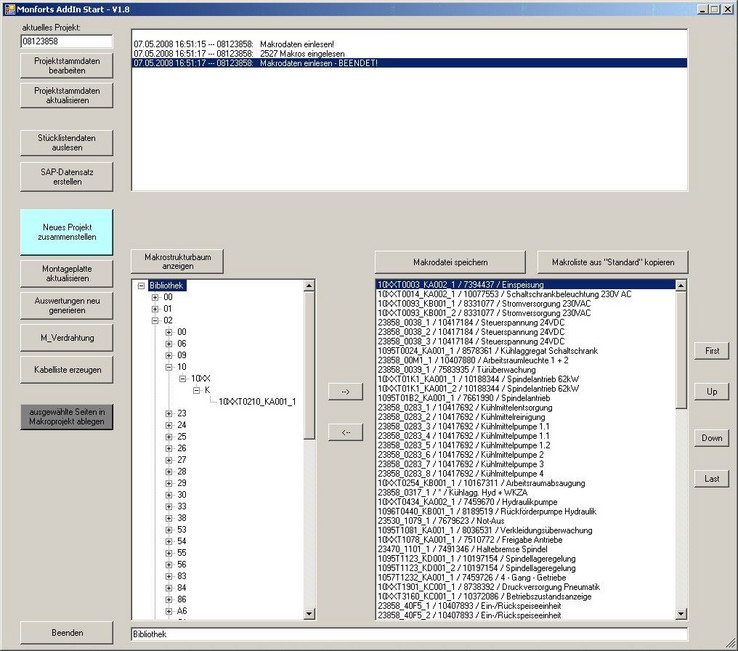Project generator sets the pace
The machine tool manufacturer Monforts used the migration from EPLAN 21 to EPLAN Electric P8 as an opportunity to create its own modules for electrical engi-neering design.
The machine tool manufacturer Monforts used the migration from EPLAN 21 to EPLAN Electric P8 as an opportunity to create its own modules for electrical engi-neering design. This (preliminary) work paid off: Compared to manually putting together customer-specific electrical documentation, the designers have a time sav-ings of up to 95% and can therefore complete many more projects. A. Monforts Werkzeugmaschinenbau GmbH & Co. KG, located in Mönchengladbach, has an excellent reputation as a manufacturer of turning lathes and turning & milling lathes. Monforts range of products is at the "high end" of machining. The machines are high performance and thanks to the high precision, produce an excellent finish even for demanding applications, e.g. when finishing fittings with very high precision requirements. Technology integration: Turning plus laser
That the company's developers are innovative was demonstrated again last year with the "Combination Machine" technology: At the EMO 2007, Monforts pre-sented a turning machine with an integrated laser system that makes hardening and cadding of components during turning possible in one set-up. The MaschinenMarkt trade journal awarded this technology with the "MM Award 2007". A unique selling point of Monforts machines is the hydraulically supported lead-ing axle that starts up smoothly, runs smoothly and has excellent damping proper-ties. This is an important prerequisite for high precision finishing processes. 23 machine types – and many options
The company's product range currently includes 23 machine types that are avail-able with various controls and numerous options. Design manager Dr. Dominic Deutges: "Our customers do not receive "ready-made" machines. We offer cus-tomer-specific solutions that are tailored to specific individual applications." Therefore, 80-90% of the design work is put into the standard machine, but part of each machine is also custom designed. These individual custom designs are initially done based on the variant design principle: The electrical engineering designer calls up the design data of the ma-chine type and starts custom designing to constructively implement options such as, for example, integration of automation concepts or country-specific safety reg-ulations. EPLAN Electric P8: API interface facilitates customization
When Monforts decided to migrate from EPLAN 21 to EPLAN Electric P8, a decision was also made to change this procedure. Heinz-Günter Kämmerling, CAD administrator: "We wanted to better structure and speed up the electrical engineering design processes." EPLAN Electric P8 provides the ideal basis. The system not only lets you switch between working in a graphic-oriented and database-oriented mode, it also lets you create macros and systematically store them in a library. And, for Monforts a crucial point, the "Application Programming Interface" (API) provides EPLAN Electric P8 users with a powerful programming interface with which the CAE system can be tailored to specific tasks. Monforts used this function extensively. Heinz-Günter Kämmerling: "Before the actual migration, we primarily completed two tasks. First, we divided all machine functions and options into modules and broke down the electrical engineering documentation of these modules into macros in EPLAN Electric P8. Then we used API to create a project generator that virtually leads the designer through project creation." E-CAD modules with 4000 Macros
IOverall, there are around 4000 macros available to Monforts designers in the EPLAN library. There is a reason that there are so many. Kämmerling: "It was very important to us to systematically divide the machine into modules and to actually enter all possible options. Only in this way can we achieve uniform design. To remain flexible and to maintain a structured overview, the modules were kept relatively small: By definition, each macro only has one page." And of course, the module interfaces are so clearly defined that rework is not usually necessary and you only need to click on the macros and line them up. Project generator systemizes the procedure
When selecting a module, the project generator provides the designer with definitive support. A systematic procedure is also a top priority here. The Monforts CAD team has used API to program the generator so that is offers the respective module or option in a specific sequence. The designer only has to make a selection and no Up to 95% time savings
In this way, the electrical engineering design has truly been speeded up. Designer Christian Maiburg: "When putting together the documentation we have a time savings of up to 95%. The greater the relative number of standard options, the greater the time savings." The new procedure offers other advantages besides the time factor. For example, enclosure configuration is made simpler: One and the same option is always implemented in the same place in the enclosure. This simplifies the service staff's work. P8 supported design starts with a virtual basis enclosure containing all modules. Unused parts are automatically deleted to obtain the enclosure's actual configuration. The connection from EPLAN to the SAP system, which Monforts uses for commercial functions, makes work easier for purchasing and guarantees that everyone uses up-to-date data. Thinking in assemblies - and in the long term
"Thinking in assemblies" has paid off for Monforts: The combination of time savings and a systematic procedure brings internal company advantages and also impresses customers. The preliminary work, including migration, went according to plan and very smoothly. Heinz-Günter Kämmerling: "At the beginning, there were performance problems because the multi-user capability created a lot of network traffic when several designers used the project generator at the same time to put together projects automatically. This problem could be quickly eliminated due to the close cooperation with EPLAN. The new design method is also useful when converting machines. Dr. Dominic Deutges: "Our machines last a long time and are sometimes converted or changed over many times. The modular design also offers advantages for these tasks, because options in the system can be simply added with a mouse click." Therefore, there is no doubt at Monforts that they are on the right track with EPLAN Electric P8 and the in-house developed project generator. The software is to be further developed. Those in charge are currently thinking about whether they should integrate fluid engineering and use EPLAN Fluid, which runs together with EPLAN Electric P8 on a common development platform. The advantage: more integration in the engineering process due to a uniform data basis and direct interaction of both systems. New Version 1.9 of EPLAN Electric P8
Extended functions in the parts management and documentation provide more leeway for individual configurations. EPR as an add-on makes tedious checking of incoming projects superfluous. At the press of a button, EPR automatically creates a report which shows all deviations from the specifications. The new flexible parts management in EPLAN Electric P8 supports every described property. Users can define their individual parts tree structure that also reproduces the internal company identification codes. The display of the component data in the schematic can be individually configured. Once defined, the user simply se-lects the formatting and sequence of the properties. The connection point designations can also be defined and configured separately. The new EPLAN Electric P8 not only runs under Windows Vista – it is just as easy to handle.







